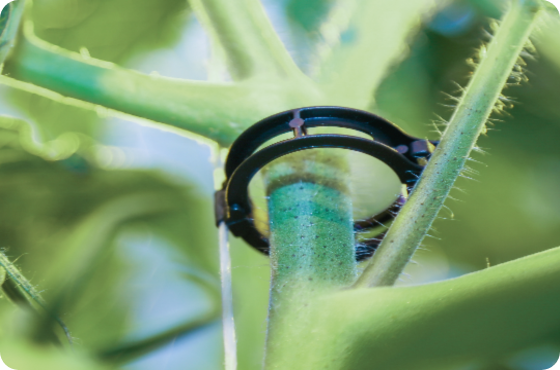Quality Products
Fast Delivery
Premium Service
Written by Martin Meuldijk, specialist Crop Rotation | Last update: 26. June 2023
The demand for biodegradable and compostable clips in Canada is rapidly increasing due to the growing emphasis on sustainability in horticulture. Biodegradable clips offer several benefits over traditional plastic support clips, particularly in terms of waste management at the conclusion of the growing season. Our specialist outlines the advantages and disadvantages of biodegradable clips.

Biodegradable clips come in two main alternatives: metal rings and bio clips. With the increasing focus on sustainability, more growers are transitioning to compostable biodegradable clips. These bio clips can be composted after harvest. This eliminates the need to collect and separate clips from crop waste during crop rotation, saving labour and offering positive environmental benefits.
Most biodegradable tomato clips are made from starch or lactic acids and are certified as compostable according to DIN EN 13432 standards, making them suitable for industrial composting.
When a material is labeled as compostable, it means it will degrade within a specified period under industrial conditions. On the other hand, a material is considered biodegradable when fungi and bacteria can break it down. It is important to note that while compostable materials may not necessarily be of biological origin, and conversely, materials of biological origin are not always compostable.
Biodegradable clips stand apart from conventional plastic tomato clips in their material, strength, and price. Below, you'll discover the contrasts and the upsides and downsides of opting for bio clips.
Most biodegradable clips are crafted from PLA, short for polylactic acid or polylactide. These bio clips, while still plastic, are of a variety that are biocompatible and can biodegrade in industrial composting facilities. They are fashioned from renewable plant-based sources like corn starch, positioning them as a sustainable substitute for traditional plastics.
+ Compostable
+ Biodegradable
Biodegradable clips closely resemble their plastic counterparts and perform similarly. They feel slightly sturdier and more rigid. However, bio clips are more prone to tearing along the fold, particularly when supporting the weight of the plant. Some growers resort to thicker clips, though this doesn't always solve the issue.
- More susceptible to tearing at the fold, even with thicker clips
As many growers are aware, clipping the stems of tomato plants, cucumber plants, bell peppers, or other vine crops with twine is a quick and straightforward process, eliminating the need for twisting. Bio clips offer the same convenience as plastic clips for this purpose. They don't impede plant growth, thereby boosting fruit production and quality.
- Does not impede growth, leading to increased production and quality